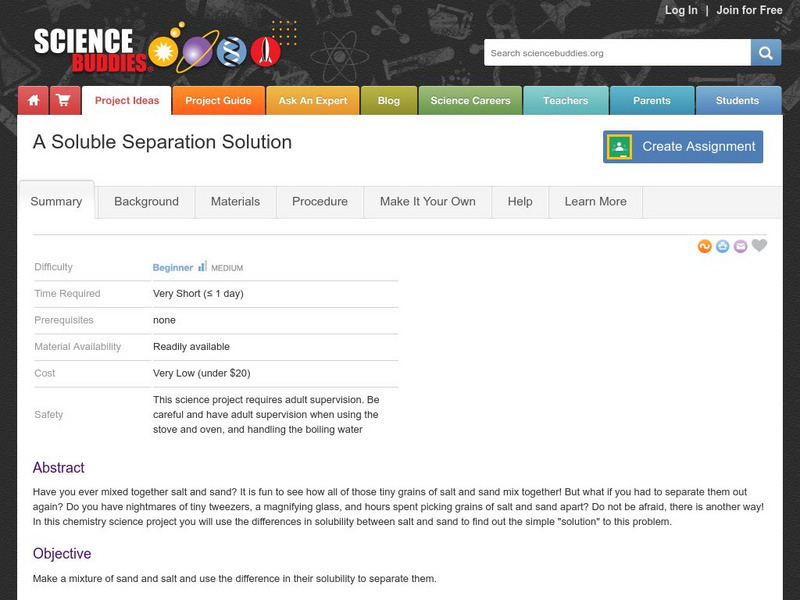Hi, what do you want to do?
Curated OER
Grating Spectrometer
Learners calculate the Balmer series. In this physics lesson, students observe hydrogen lamp spectra using spectrometers. They calculate wavelength and compare them with their theoretical calculations.
Science Buddies
Science Buddies: A Soluble Separation Solution
Have you ever mixed together salt and pepper? Isn't it fun to see how all of those tiny grains of salt and pepper mix together. But what if you had to separate them out again? Do you have nightmares of tiny tweezers, a magnifying glass,...
Science Buddies
Science Buddies: A Magnifying Discovery
Have you ever looked through a magnifying lens? Why do things look bigger when you look at them through the magnifying lens? Even though the object appears to get larger, it really stays the same size. Each lens has its own unique power...
Curated OER
Merriam Webster: Visual Dictionary Online: Magnifying Glass
Illustration of a magnifying glass.
Khan Academy
Khan Academy: Thin Lens Sign Conventions
Have you ever wondered why some people need glasses and others don't? It's because of the way light is focused by the lens in your eye. This lens, like magnifying glasses, eyeglasses, and contact lenses, is considered a thin lens.
Exploratorium
Exploratorium: Science Snacks: Giant Lens
A discussion of how to make a refraction exhibit using a Fresnel lens. Consists of assembly instructions and a "To do and notice" section.
Exploratorium
Exploratorium: Water Sphere Lens
A discussion of how to make a magnifying lens exhibit using a water-filled flask and a light bulb. Consists of assembly instructions and a "To do and notice" section. Great for a teacher demonstration or a student project.
Optical Society
Optical Society of America: Optics for Kids: Watch Tv Upside Down
An experiment to invert a television image using a magnifying lens. Accompanied by an explanation of what's happening.
Synopsys
Synopsys: Learn About Optics
Highly informational optic site for kids provides everything one might want to know about light. Various topics include light basics, controlling light, lenses, complex lenses, what's cool about lasers and much more!











